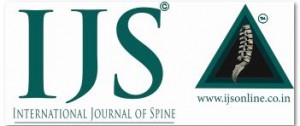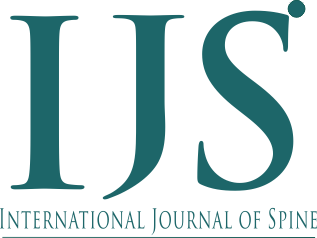Awake Microtubular Spinal Decompression: A Step Towards Better Peri-Operative Patient Safety, and Satisfaction
Volume 7 | Issue 2 | July-December 2022 | Page: 01-06 | Goparaju VNR Praveen, Amit Chugh, Ameya Rangnekar, Vishal Kundnani, Mani Kant Anand, Abhijith Shetty,┬ĀSunil Chodavadiya, Saijyot Raut
DOI: https://doi.org/10.13107/ijs.2022.v07i02.37
Authors: Goparaju VNR Praveen [1], Amit Chugh [1], Ameya Rangnekar [1], Vishal Kundnani [1], Mani Kant Anand [1], Abhijith Shetty [1],┬Ā┬ĀSunil Chodavadiya [1], Saijyot Raut [2]
[1] Department of Orthopaedics, Bombay Hospital and Medical Research Centre, Mumbai, Maharashtra, India.
[2] Department of Orthopaedics, Lilavati Hospital, Mumbai, Maharashtra, India.
Address of Correspondence
Dr. Goparaju VNR Praveen,
Fellow, Association of Spine Surgeons in India, Bombay Hospital & Medical Research Centre, Mumbai, Maharashtra, India.
E-mail: praveen.gvnr@gmail.com
Abstract
Introduction: Microtubular decompression (MTD) being a short-duration surgery, with many advantages, has gained popularity and can be done either in general anaesthesia (GA) or awake techniques like spinal anaesthesia (SA). The authors ventured to assess perioperative parameters, quantify peri-operative complications as the primary aim and determine patient satisfaction as the secondary aim of the study.
Materials and Methods: It was a retrospective study performed over a period of ten years (2009ŌĆō2019) and included 625 patients. The patients included were aged greater than 18 years, American Society of Anaesthesiologists (ASA) score 1, 2, or 3. Patients with ASA 4 or 5, spinal instability, infection, or revision surgeries were excluded.
Results: There is no significant difference in the complication rates. The clinical outcome in the form of VAS and ODI scores showed significant differences both in SA and GA groups at the final follow-up. The total anaesthetic, surgical times, mean arterial pressure (MAP), and heart rate (HR) perioperatively were longer in the GA group (P < 0.05). The perioperative blood pressures are lower in the SA group. The dissatisfaction rate is about 3.5%, of which the patients and a total of 88.5% of patients would like to opt for SA for future surgeries.
Conclusion: This study represents the ten-year experience with MTD operated either with SA or GA. Awake spinal surgery is promising and has the glaring benefits of better peri-operative hemodynamic stability, and faster recovery with reduced surgical and anaesthetic duration. Dissatisfaction rates can be decreased by better explanation and the patientŌĆÖs decision.
Keywords: Awake spine surgery, Microtubular decompression, Hemodynamic parameters, Complications, Patient satisfaction.
References
1. Foley KT, Smith MM (1997) Microendoscopic discectomy. Tech Neurosurg 3:301ŌĆō307.
2. Poletti CE (1995) Central lumbar stenosis caused by ligamentum flavum: unilateral laminotomy for bilateral ligamentectomy: preliminary report of two cases. Neurosurgery 37:343ŌĆō347.
3. Scott NB, Kehlet H. Regional anaesthesia and surgical morbidity. Br J Surg 1988;75:299ŌĆō304.
4. Greenbarg PE, Brown MD, Pallares VS, et al. Epidural anesthesia for lumbar spine surgery. J Spinal Disord 1988;1:139ŌĆō43.
5. Jellish WS, Thalji Z, Stevenson K, et al. A prospective randomized study comparing short and intermediate term peri-operative outcome variables after spinal or general anesthesia for lumbar disk and laminectomy surgery. Anesth Analg 1996;83:559ŌĆō64.
6. Pao JL, Chen WC, Chen PQ (2009) Clinical outcomes of microendoscopic decompressive laminotomy for degenerative lumbar spinal stenosis. Eur Spine J 18:672ŌĆō678.
7. Mannion R, GuilfoyleM, Efendy J et al (2012) Minimally invasive lumbar decompression long-term outcome,morbidity and the learning curve from the first 50 cases. J Spinal Disord Tech 25:47ŌĆō51.
8. Perez-Cruet MJ, Fessler RG, Perin NI (2002) Review: complications of minimally invasive spinal surgery. Neurosurgery 51(2 Suppl):26ŌĆō36.
9. Patel N, Bagan B, Vadera S et al (2007) Obesity and spine surgery: relation to perioperative complications. J Neurosurg Spine 6:291ŌĆō297.
10. McLain RF, Bell GR, Kalfas I, Tetzlaff JE, Yoon HJ. Complications associated with lumbar laminectomy: a comparison of spinal versus general anesthesia. Spine (Phila Pa 1976). 2004;29(22):2542-2547. doi:10.1097/01.brs.0000144834.43115.38.
11. Hassi N, Badaoui R, Cagny-Bellet A, et al. Spinal anesthesia for disk herniation and lumbar laminectomy: a propos of 77 cases. Cah Anesthesiol 1995; 43:21ŌĆō5.
12. Dharmalingam TK, Ahmad Zainuddin NA. Survey on maternal satisfaction in receiving spinal anaesthesia for caesarean section. Malays J Med Sci. 2013;20(3):51-54.
13. Davis FM, McDermott E, Hickton C, et al. Influence of spinal and general anaesthesia on haemostasis during total hip arthroplasty. Br J Anaesth 1987; 59:561ŌĆō71.
14. Cook PT, Davies MJ, Cronin KD, et al. A prospective randomized trial comparing spinal anaesthesia using hypobaric cinchocaine with general anesthesia for lower limb vascular surgery. Anaesth Intensive Care 1986;14: 373ŌĆō80.
15. Thorburn J, Louder JR, Vallance R. Spinal and general anaesthesia in total hip replacement: frequency of deep vein thrombosis. Br J Anaesth 1980;52: 1117ŌĆō21.
16. Covino BG. Rational for spinal anesthesia. Int Anesthesiol Clin 1989;27:8ŌĆō12.
17. Pflug AE, Aasheim GM, Foster C. Sequence of return of neurologic function and criteria for safe ambulation following subarachnoid block. Can Anaesth Soc J 1978;25:133ŌĆō9.
18. Riegel B, Alibert F, Becq MC, et al. Lumbar disc herniation with surgical option: general versus local anesthesia. Agressologie 1994;34:33ŌĆō7.
19. Vandam, LD, Dripps, RD. Exacerbation of pre-existing neurologic disease after spinal anesthesia. N Engl J Med 1956;255:843ŌĆō9.
20. Kennedy F, Effron AS, Perry G. The grave spinal cord paralysis caused by spinal anesthesia. Surg Gynecol Obstet 1950;91:385ŌĆō97.
21. Dekutoski MB, Norvell DC, Dettori JR et al (2010) SurgeonsŌĆÖ perceptions and reported complications in spine surgery. Spine 35(Suppl):S9ŌĆōS21.
22. Young DV. Comparison of local, spinal and general anesthesia for inguinal herniorrhaphy. Am J Surg 1987;153:560ŌĆō3.
23. Silver DJ, Dunsmore RH, Dickson CM. Spinal anesthesia for lumbar disc surgery: review of 576 operations. Anesth Analg 1976;55:550ŌĆō4.
24. Guiot BH, Khoo LT, Fessler RG (2002) A minimally invasive technique for decompression of the lumbar spine. Spine 27:432ŌĆō438.
25. Ikuta K, Arima J, Tanaka T et al (2005) Short-term results of microendoscopic posterior decompression for lumbar spinal stenosis. Technical note. J Neurosurg Spine 2:624ŌĆō633.
26. Rahman M, Summers LE, Richter B et al (2008) Comparison of techniques for decompressive lumbar laminectomy: the minimally invasive versus the ŌĆ£classicŌĆØ open approach. Minim Invasive Neurosurg 51:100ŌĆō105.
27. WilbyMJ, Seeley H, Laing RJ (2006) Laminectomy for lumbar canal stenosis: a safe and effective treatment. Br J Neurosurg 20:391ŌĆō395.
28. Weinstein JN, Tosteson TD, Lurie JD et al (2008) SPORT Investigators. Surgical versus nonsurgical therapy for lumbar spinal stenosis. N Engl J Med 358:794ŌĆō810.
29. Khoo L, Fessler RG (2002) Microendoscopic decompressive laminotomy for the treatment of lumbar stenosis. Neurosurgery 51(5 suppl):S146ŌĆōS154.
30. Palmer S, Turner R, Palmer R (2002) Bilateral decompression of lumbar spinal stenosis involving a unilateral approach with microscope and tubular retractor system. J Neurosurg 97(Suppl 2):213ŌĆō217.
31. Palmer S, Turner R, Palmer R (2002) Bilateral decompressive surgery in lumbar spinal stenosis associated with spondylolisthesis: unilateral approach and use of a microscope and tubular retractor system. Neurosurg Focus 13:E4.
32. Sindhvananda W, Leelanukrom R, Rodanant O, Sriprajittichai P. Maternal satisfaction to epidural and spinal anesthesia for cesarean section.J Med Assoc Thai. 2004;87(6): 628ŌĆō635.
| How to Cite this Article: Praveen GVNR, Chugh A, Rangnekar A, Kundnani V, Anand MK, Shetty A,┬ĀChodavadiya S, Raut S | Awake microtubular spinal decompression: A step towards better peri-operative patient safety and satisfaction | International Journal of Spine | July-December 2022; 7(2): 01-06┬Ā|┬Ā https://doi.org/10.13107/ijs.2022.v07i02.37 |


 ┬Ā
┬Ā